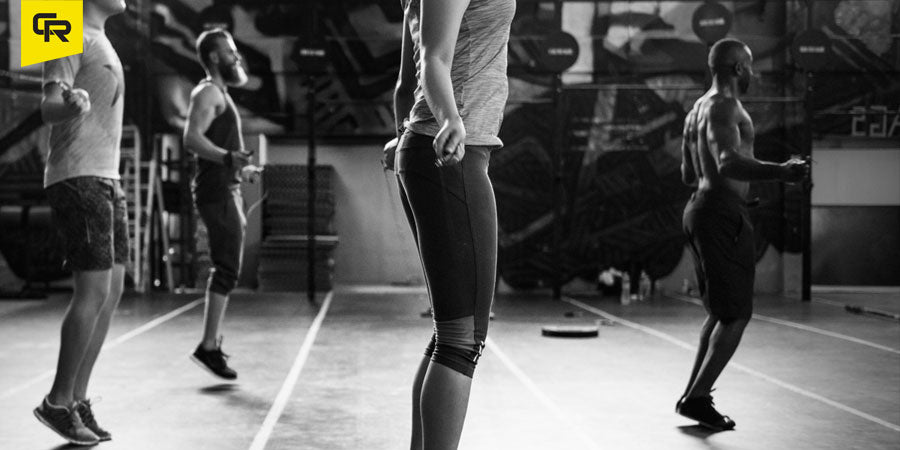Are you a personal trainer or fitness coach?
Then you've probably seen how the fitness landscape has been shifting over the past few decades. It's becoming ever more important (and difficult) to differentiate yourself.
In fact, according to the US Labor Department, the number of personal training jobs has grown an astounding 44% from 2001 to 2011. And more and more training programs are becoming available to meet the ever-growing demand for good fitness advice.
If you want to be successful, you have to stand out from the crowd. You have to be different. You have to be exceptional or you can easily get ignored.
In today's post, we'll show you one simple way you can differentiate yourself by adding a unique training tool to your arsenal - the weighted jump rope.
Why Weighted Ropes?
As a trainer, you likely recognize the benefits of jump rope training. You may have even incorporated jump ropes into your clients’ workout plan in the past.
But the problem with most ropes is that they're too difficult to learn with. You may have already experienced this. Clients get frustrated and discouraged when they trip up even after a few tries. And the last thing you want is a discouraged client.
But that's where weighted ropes are different. They are unique in the sense that they offer benefits and advantages that you can't get with off-the-shelf jump ropes.
Watch this short video for a quick primer:
As a trainer, weighted ropes can provide you with a great opportunity to differentiate yourself from other trainers. But let's dig more into the specifics.
Help Your Beginners Out
"You want me to start with heavier ropes?"
That's what we usually hear when we hand our heavy ropes to beginners.
Sure - it sounds counter-intuitive - but this also gives you an opportunity to show your clients that you understand the difference between regular and heavy ropes.
Not many trainers do.
Truth is that weighted ropes make it much easier for beginners to learn how to jump rope.
Why?
They provide just enough feedback to let your client know where the rope is while they're jumping. That's a huge advantage.
In fact, you could let your client try a basic plastic rope and a heavy rope right one after the other and let them see the difference for themselves. We always get the best reactions (and facial expressions) when we do that.
Read more: make sure your client isn't making these 4 rookie mistakes!
Heavy ropes also force your client to slow down their rotation which gives them an opportunity to time their jumps properly. Again, really important.
Need a set of heavy ropes for your clients? Check out the versatile Get Fit Bundle.
Finally...
Weighted ropes also eliminate tangling (which happens to be very common with regular PVC ropes). And less tangling means fewer mistakes and less frustration.
You'll never see a 1/2 Lb rope or a 1Lb jump rope kink or tangle.
No matter what fitness level or skill ability your clients may have, you'll be able to help them progress with a weighted rope.
Help Your Client Achieve (Almost) Any Goal
Weighted jump ropes can add an extra dose of versatility to any training program.
There are endless ways to incorporate them into a client's training session or class - as a warm-up or cool-down, as part of a training circuit, or as the primary form of cardio.
In other words, use them as an appetizer, a side dish or an entree.
The thing trainers tend to love most about weighted jump ropes is that they can be used as part of any goal-oriented training program.
Your client wants to lose weight? Check. Read here.
Your client wants to replace their run with something more engaging. Check. Read here.
Your client wants to improve their athleticism? Check. Teach them double unders here.
No matter what the goal, the weighted rope can be added to your clients routine for a fun and engaging way to mix things up.
It really all comes down to resistance.
The heavier the rope, the greater the resistance. And the greater resistance, the greater the muscle engagement. Here's what that looks like in pretty pictures:

The heavier the rope, the greater the resistance. And the greater resistance, the greater the muscle engagement.
Build Your Client's Confidence
As a trainer, half the battle is pushing your client to overcome mental barriers.
Many clients will convince themselves that they’re not capable of learning a new skill - that they’re not coordinated enough, or they’re too old/non-athletic to learn how to jump rope.
Read more: discover a few simple ways to help your client overcome initial intimidation.
We've already discussed the benefits of using weighted ropes to help beginners.
But there's more to weighted ropes...
Here's a little exercise you can try...
Give your client a weighted jump rope and ask them to perform as many basic jumps as they can within 60 seconds.
Write that number down for them. It's going to be their benchmark.
After a few weeks of training and technique development, have them do the test again. They will generally be impressed with the new numbers and you'll have something to use to measure and gauge their progress!
Not sure how to teach them proper technique? We've put together a quick one-page technique checklist that you can download and walk through with your client.
Quick Summary
Are you a trainer? We’d love to hear your thoughts on weighted jump rope training. Do you use weighted ropes? Do you use any jump ropes?
Share your experiences in the comment section below!
We hope this post has inspired you to add weighted jump ropes to your arsenal as it just might be one of the more unique ways to differentiate yourself in the increasingly competitive space of personal training.
Cheers!










